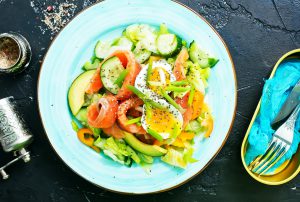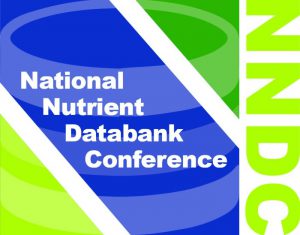The NCC Food and Nutrient Database includes more foods and nutrients than other research quality U.S. databases (comparison table).
Category Archives: Uncategorized
What is the NCC Flavonoid and Proanthocyanidin Provisional table and how can it be used?
Since 2005, NCC has maintained the NCC Flavonoid and Proanthocyanidin Provisional table. In the 2023 version of this table, values for one or more of 26 flavonoids* are provided for 1010 foods in the NCC Food and Nutrient Database. Additionally, values are provided for one or more of five classes of proanthocyanidins* for 1180 foods. Nutrient values in the provisional table are reported as mg/100g edible portion of food.
Nutrient values for the table have been compiled from the USDA Database for the Flavonoid Content of Selected Foods, Release 3.3 (Mar. 2018), the USDA Database for the Proanthocyanidin Content of Selected Foods, Release 2.1 (Mar. 2018), as well as from scientific literature.
The NCC Flavonoid and Proanthocyanidin Provision Table may be linked to foods in the NDSR component/ingredient output file. By carrying out this linkage, one may estimate intake of the flavonoids and proanthocyanidins in the Table, recognizing that composition data is missing for many foods, and therefore intake may be underestimated to some extent.
The current price for the 2023 Flavonoid and Proanthocyanadin Provisional table is $1,100. Please contact NCC for more information or if you are interested in licensing the table.
*Values are missing for some of the flavonoids/proanthocyanidins in the provisional table. Many of these values are based on analytical data and NCC imputed values for only some categories of food, for example cooked and corresponding canned vegetables were assigned similar values.
Has NDSR been validated?
NDSR is designed for collecting 24-hour dietary recalls and analyzing food records. The validity of these approaches to dietary intake assessment have been assessed in numerous studies, some of which involved the collection/analysis of dietary recalls and records using NDSR.
One suggested resource for learning about the validity of 24-hour dietary recalls and foods records is Chapter 3 (24-Hour Recall and Food Record Methods) in the text Nutritional Epidemiology (third edition, 2013) by Walter Willett.
Another resource for locating validation studies involving specific demographic groups (e.g. children, African Americans, etc.) is the National Cancer Institute’s Dietary Assessment Calibration/Validation Register.
The National Collaborative on Childhood Obesity Research (NCCOR) Measures Registry also provides references on the validity of various dietary assessment measures, including 24-hour dietary recalls for children.
NDSR has been used for dietary intake assessment in hundreds of nutrition related studies. A compilation of papers published by NDSR users is available.
How does NDSR compare to other dietary analysis software?
NDSR is unique in a number of ways, some of which are highlighted below:
How does NDSR compare to ASA24?
NDSR is a PC-based dietary analysis program for 24-hour dietary recall collection and analysis of food records, menus, and recipes. Collection of dietary recalls is carried out by an interviewer who is trained in the use of NDSR. The dietary recalls may be collected over the telephone or in-person.
The ASA24 is a web-based dietary analysis program for 24-hour dietary recall and food record collection. It is designed for self-administration, and thus requires the study participant have internet access and some level of literacy and familiarity with computers or mobile devices.
NDSR and ASA24 differ in a variety of important ways beyond platform and mode of use. To summarize, NDSR has more foods, nutrients, and quality assurance capabilities than ASA24. The ASA24 may be less costly because it is self-administered and the program is available for use at no charge.
The following documents provide greater detail regarding the differences and similarities of NDSR and ASA24 for 24-hour dietary recall collection:
NCC News Bite | March 2022
This edition contains the following articles:
• Food and Nutrient Database updates coming in NDSR 2022
• NCC publication highlights
• Zoom NDSR training workshops are filling up quickly
• NDSR price increases coming July 2022
Food and Nutrient Database Updates Coming in NDSR 2022
In the January News Bite we shared the exciting news about the addition of Healthy Eating Index (HEI) 2015 total and component scores to NDSR output files and the creation of an HEI report. In this News Bite we highlight major updates and expansions to the NCC Food and Nutrient Database. These include:
Foods unique to Jamaican, Haitian, Nigerian, and Somali cooking traditions in the U.S.
Many foods that are unique to specific cultural groups in the U.S. (e.g. Alaskan Native, Pima Indian, Mexican-American, Puerto Rican-American, Korean-American, etc.) are currently available in NDSR. To continue to improve the representativeness of foods in NDSR, we have continued our initiative to add more foods unique to Jamaican, Haitian, Nigerian, and Somali cooking traditions in the US. Over 75 foods consumed by these immigrant groups were added to NDSR 2022.

Commercial entrée and fast food updates
The following commercial entrée brands were updated: Chef Boyardee, Jenny Craig, Kashi, Michelina’s, Smucker’s Uncrustables, and Stouffers. Fast food chains updated include Arby’s, Burger King, Chipotle, Hardee’s, Little Caesars, Subway, Taco John’s, and White Castle.
Salad dressings updated
NCC created over 300 new entries for brand name salad dressings to more accurately reflect fat, total carbohydrate, cholesterol, and sodium in these products. In the process of updating salad dressings, we observed that at present most brand name salad dressings don’t say “reduced calorie” on the label. Rather, they say “light” or “lite” in relation to the regular counterpart, and consequently they are not necessarily low calorie products. New salad dressing product lines added to the 2022 database include: Annie’s, Bolthouse Farms, Healthy Choice, Ken’s Steak House, and store brand (e.g. Great Value). This means NDSR 2022 includes a total of 511 salad dressing brand-name products.
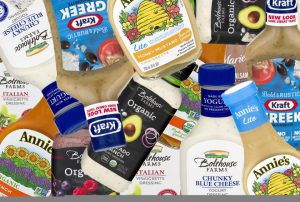
Special formulated drinks and powders
New special formulated drink product lines added to the 2022 database include: Body Fortress, Fairlife Core Power, Muscle Milk, Orgain, PediaSure, Premier Protein, Pure Protein, and Quest.
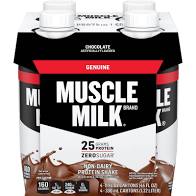
Other brand name products
NCC also updated General Mills ready to eat cereals (88 cereals in total) and Girl Scout cookies (16 varieties).
Ultra-filtered milks added
NCC added ultra-filtered milks to the milk hierarchy, and they are also included as a variable ingredient option for foods that may be prepared with milk. These dairy milk-based products contain 50% more protein and 50% less sugar when compared to regular milk, and are lactose free. Like regular milk, they are available with varying percent fat and flavors.
Other food category updates
Using FNDDS 2017-2018 data we updated the following categories: meat, poultry, fish and mixtures; grain products; fruits; and vegetables.
Phytic acid and mannitol values for tomato products updated
New and better analytic values on the phytic acid and mannitol content of tomatoes were used to update values for these food components for all tomato containing products in NDSR 2022.
DSAM – The Dietary Supplement Assessment Module (DSAM) database has been updated with NHANES 2017-March 2020 Dietary Supplement Database and NCC-maintained supplements. NCC maintained supplements include major brands of multivitamins, fiber supplements, calcium supplements, and calcium containing non-prescription antacids.
42nd National Nutrient Databank Conference (NNDC)
Preliminary program and registration are now available for the 42nd National Nutrient Database Conference, May 16-18″ For information on registering, visit the NNDC website. NCC staff will be presenting one poster and three oral presentations at the conference.
NCC Publication Highlights
NCC leadership and staff have been involved in two recent publications–one related to the nutrient content of margarine/margarine-like products and butter blend products available in the US marketplace today and another describing a new measurement tool to assess the dietary quality of toddlers in accordance with federal nutrition guidelines. Links to the full articles are provided below.
Weber C, Harnack L, Johnson A, Jasthi B, Pettit J, Stevenson J. Nutrient comparisons of margarine/margarine-like products, butter blend products and butter in the US marketplace in 2020 post-FDA ban on partially hydrogenated oils. Public Health Nutr. 2021 Nov 2:1-8.
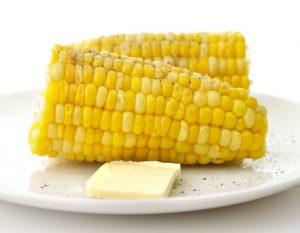
Kay MC, Duffy EW, Harnack LJ, Anater AS, Hampton JC, Eldridge AL, Story M. Development and Application of a Total Diet Quality Index for Toddlers. Nutrients. 2021 Jun 5;13(6):1943.

Zoom NDSR training workshops are filling up quickly
The Zoom format for NDSR training workshops continues to be popular with both new and existing clients. As a result, we have had to close registration early for several recent workshops. If you are considering attending a future training, we encourage you to register early. The next NDSR Training is scheduled for April 25-26, 2022. Registration on our website will close when the workshop fills, or on April 7, whichever comes first.

NDSR Price Increase Coming July 2022
NCC held prices steady over the course of the pandemic. But, to keep pace with current inflationary increases in expenses we must now institute price increases. Effective July 1, 2022 annual support and licensing fees will increase by 5%. For currently supported clients, the new pricing is as follows:
NDSR License – Initial Copy: $6,350 (increase of $300)
NDSR License – Additional Copy: $4,120 (increase of $195)
Annual Support – Initial Copy: $4,230 (increase of $200)
Annual Support – Additional Copy: $670 (increase of $30)
Contact the NCC User Support team for any additional questions.
NCC News Bite | August 2020
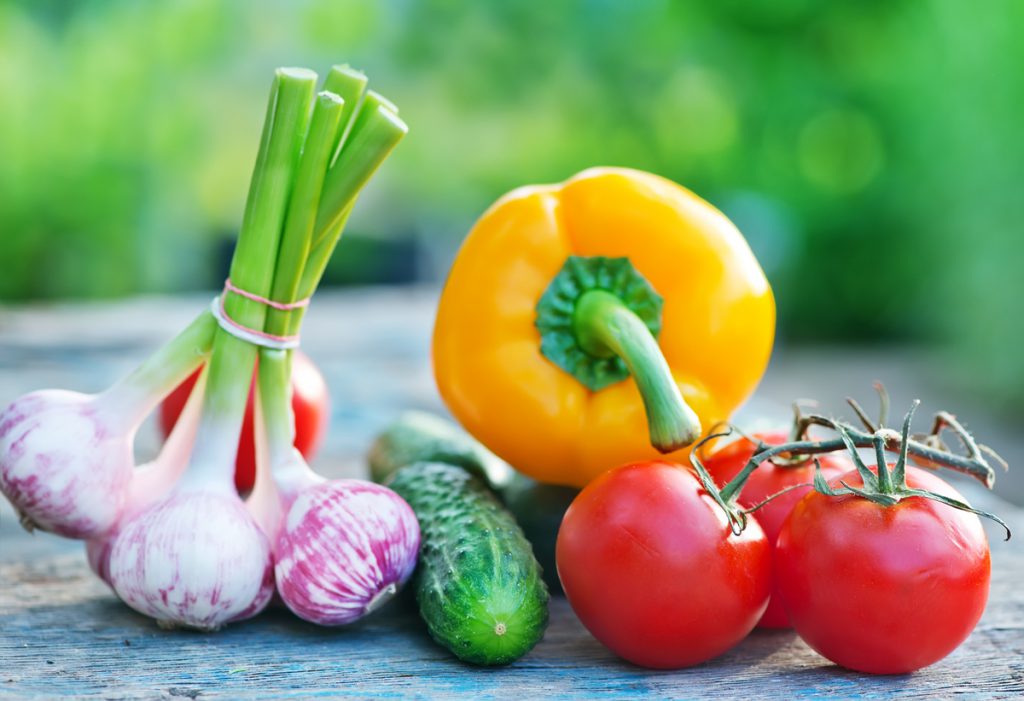
This edition contains the following articles:
- NDSR 2020 is available!
- New Menu Planner Feature in NDSR 2020
- Dietary Supplement Assessment Module (DSAM) Database Updated in NDSR 2020
- September NDSR Training on Zoom
- New Foods
NDSR 2020 is available!
We want to make sure that everyone knows that NDSR 2020 is now available! If your annual support is current as of August the primary account holder at your institution should have received an email with a link to download the newest version of NDSR. If you haven’t already, we highly recommend upgrading to the NDSR 2020, as we have made program improvements and added new foods. Highlights include a new menu planner feature to streamline planning nutrient controlled menus for feeding studies or planning menus in which there are nutrient targets; the addition of major Omega-6 fatty acids found in food (PUFA 18:2 n-6; PUFA 18:3 n-6; PUFA 20:4 n-6)and total Omega-6; and updates to many food product categories including plant-based meat alternative products. For tips on upgrading, see our FAQ page and click on ‘Upgrading’. If you did not receive an email with an upgrade link, contact NDSRHelp@umn.edu.
If you are not a currently supported and want access to NDSR 2020, email NDSRHelp@umn.edu for pricing and other details on reinstating support.
New Menu Planner Feature in NDSR 2020
We have heard positive buzz about the new Menu Planner feature in NDSR 2020, and some questions as well. One question is whether the feature is included in the program or requires separate licensing. The good news is the menu planner feature is a part of the current NDSR 2020 program (no additional installation or licensing fee required for access). It can be accessed by simply setting up a new project for menu records, with this feature selected as a preference in the project preference tab. You can learn more about the Menu Planner feature by viewing the short (4 minute) ‘Introduction to the Menu Planner Feature’ tutorial available on the NDSR Training Modules page on our website.
We want to thank the NDSR Users who shared their menu planning needs with us. Their insights were useful to us in designing this feature to meet the unique needs of those planning nutrient controlled menus. In the coming years we plan to enhance this feature to maximize its usefulness. Consequently, if you use the Menu Planner feature we encourage you to provide input and share ideas on how it may be improved. Just send us emails (NDSRHelp@umn.edu) and we’ll log all ideas for consideration in future versions of NDSR.

Dietary Supplement Assessment Module (DSAM) Database Updated in NDSR 2020
The Dietary Supplement Assessment Module (DSAM) database in NDSR 2020 has been updated with the NHANES 2015-2016 Dietary Supplement Database and NCC maintained supplements.
The following are key changes to the Supplement Facts Panel label and have been implemented in the NDSR 2020 DSAM database and output files 12-21.
- Vitamin A is now reported in Retinol Activity Equivalents (mcg) instead of International Units (IU).
- Vitamin D is now reported in mcg instead of IU.
- Vitamin E is now reported in Total Alpha-Tocopherol (mg) instead of International Units (IU).
- Folate is now reported in Dietary Folate Equivalents (DFE) instead of Total Folate (mcg).
- Niacin is now reported in Niacin Equivalents (mg) instead of Niacin (mg).
- Added Sugars is on the label.
- The Daily Values changed for many nutrients. [FDA daily values]
Data from the NHANES 2015-2016 Dietary Supplement Database does not yet reflect the new labeling rules. This also applies to some of the supplements maintained by NCC because the new label changes were not on some of the manufacturer websites during the time NCC was updating the DSAM database.
For information about combining nutrient intake from food and dietary sources, see the NCC FAQ website.
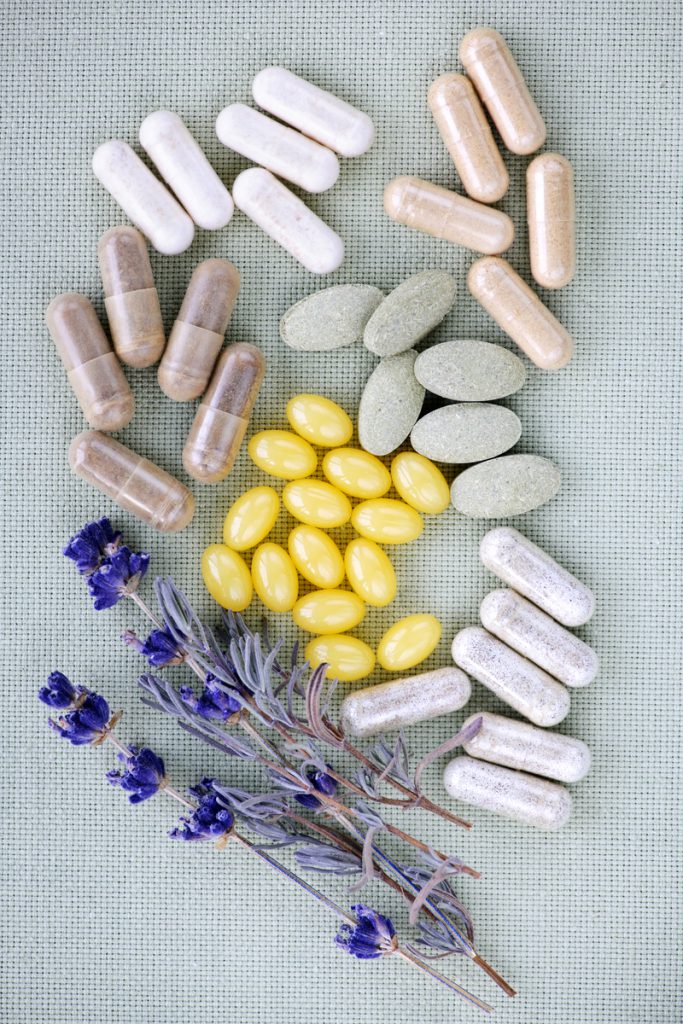
September NDSR Training on Zoom
NCC conducted the NDSR Training Workshop by Zoom in June due to the pandemic. Feedback received from trainees was very positive. Future NDSR Training Workshops by Zoom are scheduled for September 21-22 and November 9-10. Register here by September 10 if you are interested in the September training.

New Foods
The following new foods are available to you at no additional charge with this edition of the NCC News Bite. A New Foods Backup File is available for download on our website under New Food Backup Files, “Summer 2020”.
- Trader Joe’s Peanut Butter Protein Granola
- Birch Benders Keto Pancake & Waffle Mix
- Skinny Pop Popcorn
- Boost Very High Calorie Nutritional Drink
- Oreos – Lemon
- Garden of Eatin’ Grain Free Tortilla Chips
- Dave’s Killer Bread – Good Seed
- Nature Valley XL Protein Chewy Bar – Peanut Butter Dark Chocolate
What’s New in NDSR 2019?
PROGRAM IMPROVEMENTS
New – Food Serving Count System and Resulting HEI SAS Code Changes for NDSR 2019
The NCC Food Group Serving Count System has been expanded to include six new food groups:
- Unsweetened Flavored Milk Beverage Powder with Non-fat Dry Milk
- Unsweetened Flavored Milk Beverage Powder without Non-fat Dry Milk
- Yogurt – Unsweetened Whole Milk
- Yogurt – Unsweetened Low Fat
- Yogurt – Unsweetened Fat Free
- Dairy-based Unsweetened Meal Replacement/Supplement
These new food groups will help clients who are interested in differentiating between flavored milk beverage powders, yogurts, and dairy-based meal replacements/supplements that are unsweetened vs artificially sweetened (previously unsweetened products were classified in the ‘artificially sweetened’ categories for these foods).
The addition of these food groups has implications for calculating Healthy Eating Index (HEI) 2015 scores, and thus NCC has made new SAS code available on the NCC website for calculating the HEI 2015. It is recommended that you use the new SAS code instead of the previous code if you are using data collected in or restored in NDSR 2019 or a subsequent version of the program.
New – Updated Daily Values (DV) Report
A new Nutrition Fact label is coming to the marketplace, with the new label already appearing on some food products in anticipation of the mandatory implementation date of January 1, 2020 (smaller manufacturers have until January 1, 2021 to comply).
The new label has a myriad of changes. To summarize, added sugars and vitamin D are required on the new label, and the Daily Value (DV) levels for many of the label nutrients have changed to reflect current recommended intake levels. For some nutrients the unit has changed. Most notably, vitamin D is in mcg on the new label instead of IU. Also, folic acid is in the unit of mcg Dietary Folate Equivalents (DFE) instead of mcg. To keep pace with this change, the Daily Values (DV) Report in NDSR 2019 aligns with the new label.
FOOD AND NUTRIENT DATABASE UPDATES AND ADDITIONS
New Nutrients – Lignans
NDSR now includes Total Lignans and four of its subtypes: Secoisolariciresinol, Matairesinol, Lariciresinol, and Pinoresinol. Lignans are a large group of polyphenols present in a wide variety of plant foods, including seeds (flax, pumpkin, sunflower, poppy, sesame), whole grains (rye, oats, barley), bran (wheat, oat, rye), beans, fruit (particularly berries), and vegetables.
Database Improvements in NDSR 2019
- The FNDDS 2015-2016 Database was used to update foods with nutrient and non-nutrient data.
- The Legacy Release of the USDA National Nutrient Database for Standard Reference was used to update foods with nutrient and non-nutrient (e.g. density, food specific units, etc.) data.
- The yogurt category has been updated. This process included updating existing brands and adding several new brands that have emerged in the marketplace. Over 250 brand name yogurts are in NDSR 2019. While updating, we noticed a number of marketplace trends that make yogurts today different than those available the last time we updated this category. Most notably, the types of sweeteners used in yogurt have shifted. To summarize, acesulfame potassium/sucralose and Stevia/sugar blends appear to be more common, while aspartame is no longer used.
- Juice and juice drinks have been updated. This process included updating existing brands and adding several new brands that have emerged in the marketplace, with over 100 brand name juice and juice drinks included in NDSR 2019. While updating, we noticed that some manufacturers are reducing the sugar content of their juice drinks by using a combination of sugar and an artificial sweetener (e.g. Stevia or sucralose).
- New options for entering watermelon were added. The standard slice that has been in NDSR is a very large slice–a cylinder that is a full cross-section of a 7 1/2″ diameter watermelon which is equivalent to about 1.88 cups of watermelon. In NDSR 2019, this is now called the extra large slice. In addition to this pre-existing slice, there are now options for 1/8 of that cylinder as a small slice, 1/4 of that cylinder as a medium slice, and 1/2 of that cylinder as a large slice. Another new unit that is available is fruit only: chunk, 2″ x 1″ x 1″ (without rind). This can be used if a chunk of watermelon is reported without specified dimensions. For more information see the June 2019 News Bite.
- Many additional food categories were updated to better reflect the products available in the marketplace. These updates include:
- The following commercial entrée brands: Chef Boyardee, Jenny Craig, Kashi, Michelina’s, and Smucker’s Uncrustables.
- The following fast food restaurants: Arby’s, Boston Market, Burger King, Chipotle, Church’s Chicken, Jack In The Box, McDonald’s, and Subway.
- Ready-to-eat cereals: Attune Foods, Barbara’s, Familia Swiss Muesli, Kashi, and Kretschmer.
- Pancake and waffle mixes.
- New foods that have been added to this version of NDSR include:
- Bone broth
- Chili con queso with meat
- Clarified butter (ghee)
- Gluten free Bisquick
- Gluten free pancake mix
- Jelly sandwich
- Sweet potato puffs
- Taco Bell breakfast items
NCC News Bite | February 2019
This edition contains the following articles:
Food and Nutrient Database Updates Coming in NDSR 2019
Updated Daily Values (DV) Report Coming in NDSR 2019
Can NDSR be used to assess food and nutrient intake in countries other than the U.S.?

Food and Nutrient Database Updates Coming in NDSR 2019
Given today’s ever-changing marketplace and evolving food industry, the NCC database team is working hard every day to update the food and nutrient database that supports NDSR. Here are some of the updates you can look forward to in NDSR 2019:
- The yogurt category has been updated. This process included updating existing brands and adding several new brands that have emerged in the marketplace. Over 250 brand name yogurts are in NDSR 2019. While updating we noticed a number of marketplace trends that make yogurts today different than those available the last time we updated this category. Most notably, the types of sweeteners used in yogurt have shifted. To summarize, acesulfame-potassium/sucralose and Stevia/sugar blends appear to be more common, while aspartame is no longer used.
- The following brands of commercial entrees have been updated: Chef Boyardee, Jenny Craig, Kashi, Michelina’s, and Smucker’s Uncrustables.
- The following fast food restaurants have been updated: Arby’s, Burger King, Chipotle, Church’s Chicken, McDonald’s and Subway.
- The following brands of ready-to-eat cereals have been updated: Attune Foods, Barbara’s, Familia Swiss Muesli, Kashi, and Kretschmer.
- Pancake and waffle mixes were updated and options with chocolate chips and with fruit were added.
- In addition to updating food categories, we are continually adding foods to the database in response to requests from you. New foods in NDSR 2019 include bone broth, chili con queso with meat, and gluten free Bisquick.
- The FNDDS 2015-2016 Database was used to update foods with nutrient and non-nutrient data.
- The Legacy Release of the USDA National Nutrient Database for Standard Reference was used to update foods with nutrient and non-nutrient (e.g. density, food specific units, etc.) data.
- Finally, as mentioned in the November 2018 News Bite, we are adding lignans (total and four sub types) to NDSR 2019.

Updated Daily Values (DV) Report Coming in NDSR 2019
A new Nutrition Fact label is coming to the marketplace, with the new label now appearing on some food products in anticipation of the mandatory implementation date of January 1, 2020 (smaller manufacturers have until January 1, 2021 to comply). To keep pace with this change, the Daily Values (DV) Report in NDSR 2019 will align with the new label.
The new label has a myriad of changes. To summarize, added sugars and vitamin D are required on the new label, and the Daily Value (DV) levels for many of the label nutrients have changed to reflect current recommended intake levels. For some nutrients the unit has changed. Most notably, vitamin D is in mcg on the new label instead of IU. Also, folic acid is in the unit of mcg Dietary Folate Equivalents (DFE) instead of mcg.
Let us know if you have any questions about the new DV report.
Can NDSR be used to assess food and nutrient intake in countries other than the U.S.?
It is challenging to assess food and nutrient intake in many countries due to the lack of country specific food and nutrient databases that are comprehensive and complete. In addition, dietary analysis software applications for calculating nutrient intake are often not available. To address these challenges, some researchers have begun using NDSR to assess food and nutrient intake in countries outside the U.S.
Using NDSR to assess food and nutrient intake in countries other than the U.S. requires special procedures because the nutrient composition values for foods in NDSR are based on U.S. foods. Nutrient values for some foods in NDSR may be representative of those available in other countries (e.g., nutrient content of a guava in the U.S. and a guava in Peru may be comparable). However, values may not be comparable for some foods due to different food fortification practices across countries, use of different cultivars of plants, and differences in food ingredient and preparation practices. An additional issue is that some food descriptors vary across countries. For example, in the U.S. ‘biscuit’ refers to a fat-rich leavened baked good generally served with a meal. In contrast, in many other countries ‘biscuit’ refers to a sugar-sweetened baked good served as a snack or dessert.
NDSR includes several features that accommodate its use internationally. Most notably, foods/dishes can be added to the program using the program’s User Recipe feature. This feature allows the researcher to add foods/dishes that are not available in the NDSR database. Dietary recall interview prompts in the program may be displayed in Spanish, which facilitates its use in Spanish speaking countries. Finally, food amounts may be entered in metric (e.g. ml, cm, etc.), which is useful in countries that use the metric/international system of units (SI).
We’d be happy to talk with you to discuss your needs and answer questions you may have about using NDSR for assessing food and nutrient intake in countries other than the U.S.
Marketplace Changes in the Baby Food Aisle Abstract
Marketplace Changes in the Baby Food Aisle. Jennifer Stevenson, Bhaskarani Jasthi, PhD RD, Kristine Schmitz, Janet Pettit, and Lisa Harnack, DrPH RD. University of Minnesota Nutrition Coordinating Center.
Objective: To describe changes between 2009 and 2018 in the following characteristics of baby food products offered in the US by leading manufacturers: products labeled as ‘organic’; products sold in pouches; dry cereals containing whole grain ingredients; and complexity (inclusion of multiple ingredients).
Materials and Methods: The University of Minnesota Nutrition Coordinating Center (NCC) Food and Nutrient Database includes baby foods sold by leading manufacturers in the US, and this food category was updated in 2018 to reflect the current marketplace. To examine changes in baby food products over time the products offered in 2018 were compared with products in the database when this product category was updated in 2009. Manufacturers included in the database in both 2009 and 2018 include Gerber, Beech-Nut, and Earth’s Best. In 2018 baby food products sold by several additional manufacturers were added (Plum Organics, Ella’s Kitchen, and Happy Family).
Results: When comparing data from 2009 to 2018, Beech-Nut, Earth’s Best, and Gerber increased the number of baby food products they offer. Beech-Nut and Gerber increased the number of products labeled as ‘organic’ while other manufacturers sell only organic foods (e.g. Earth’s Best and Plum Organics). Most of the dry cereals in the market today contain one or more whole grain ingredients, with a notable increase for Gerber (from 25% to 72% of their dry cereals). While pouches did not exist in the marketplace in 2009 for the major manufacturers, currently all of the companies in the NCC database sell some or all of their products in pouches. Baby foods that combine multiple ingredients (e.g. fruit and vegetable ingredients) are more common now than in 2009.
Significance: The NCC Food and Nutrient Database has been updated to reflect changes to assist researchers studying the diets of infants and young children.

